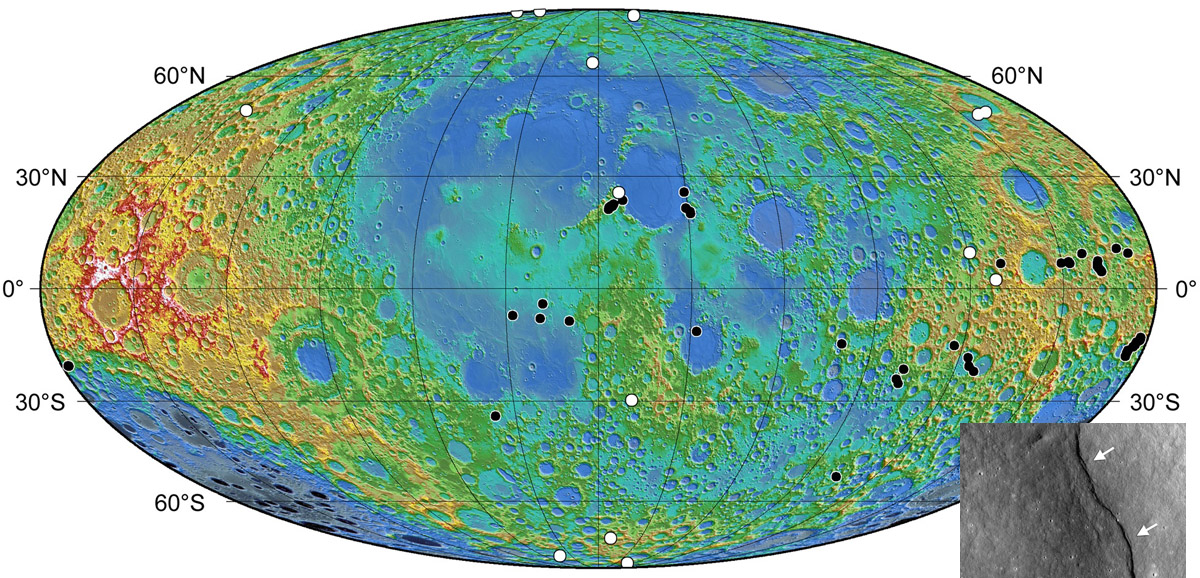Difference between revisions of "August 21, 2010"
| Line 1: | Line 1: | ||
__NOTOC__ | __NOTOC__ | ||
=Continuing Deformation= | =Continuing Deformation= | ||
| + | <!-- Start of content --> | ||
<!-- ws:start:WikiTextHeadingRule:1:<h1> --> | <!-- ws:start:WikiTextHeadingRule:1:<h1> --> | ||
<!-- ws:start:WikiTextLocalImageRule:14:<img src="/file/view/LPOD-Aug21-10.jpg/157581885/LPOD-Aug21-10.jpg" alt="" title="" style="width: 1000px;" /> -->[[File:LPOD-Aug21-10.jpg|LPOD-Aug21-10.jpg]]<!-- ws:end:WikiTextLocalImageRule:14 --> <br /> | <!-- ws:start:WikiTextLocalImageRule:14:<img src="/file/view/LPOD-Aug21-10.jpg/157581885/LPOD-Aug21-10.jpg" alt="" title="" style="width: 1000px;" /> -->[[File:LPOD-Aug21-10.jpg|LPOD-Aug21-10.jpg]]<!-- ws:end:WikiTextLocalImageRule:14 --> <br /> | ||
| Line 12: | Line 13: | ||
<em>Science</em> [http://www.sciencemag.org/cgi/content/abstract/329/5994/936 paper]. <br /> | <em>Science</em> [http://www.sciencemag.org/cgi/content/abstract/329/5994/936 paper]. <br /> | ||
<br /> | <br /> | ||
| + | <hr /> | ||
| + | <table class="wiki_table"> | ||
| + | <tr> | ||
| + | <td><!-- ws:start:WikiTextMediaRule:0:<img src="http://www.wikispaces.com/site/embedthumbnail/custom/6743029?h=0&w=0" class="WikiMedia WikiMediaCustom" id="wikitext@@media@@type=&quot;custom&quot; key=&quot;6743029&quot;" title="Custom Media"/> --><div style="text-align:center;margin:0px;padding:0px;width:280px;"><embed src="http://ra.revolvermaps.com/f/r.swf" type="application/x-shockwave-flash" pluginspage="http://www.macromedia.com/go/getflashplayer" quality="high" wmode="window" allowscriptaccess="always" allownetworking="all" width="280" height="280" flashvars="m=8&nostars=false&recenthits=true&i=07jzuG9zX2e&counter=true&color=ff0000&bg=000000&size=280" /><br /> | ||
| + | [http://www.revolvermaps.com/ Get Your Own Visitor Globe!]</div><!-- ws:end:WikiTextMediaRule:0 --><br /> | ||
<p><b>Yesterday's LPOD:</b> [[August 20, 2010|No Longer A]] </p> | <p><b>Yesterday's LPOD:</b> [[August 20, 2010|No Longer A]] </p> | ||
<p><b>Tomorrow's LPOD:</b> [[August 22, 2010|The Glorious Serpentine Ridge]] </p> | <p><b>Tomorrow's LPOD:</b> [[August 22, 2010|The Glorious Serpentine Ridge]] </p> | ||
| − | < | + | <!-- Removed reference to store page --> |
| + | <!-- End of content --> | ||
| + | {{wiki/ArticleFooter}} | ||
Revision as of 13:16, 8 February 2015
Continuing Deformation

image from NASA/LRO. Digital topographic map with black circles representing lobate scarps discovered during the Apollo era, and white dots newly discovered scarps seen on LRO image. Inset at bottom left is scarp at Gregory crater - the white circle near the equator at far right.
Teams flying spacecraft around a planet often rediscover what was found on previous missions. Press releases, or the way they are sensationalized by the press, sometimes seem to imply that the spacecraft has made a wondrous new discovery, when it is in fact merely an extension of what was learned earlier. This has happened repeatedly on Mars missions, and there is a tinge of it in recent press coverage of imaging of lunar lobate scarps by Lunar Reconnaissance Orbiter. The LRO team's press release states that such scarps were first discovered in Apollo images and the map shows the currently known distribution of Apollo (black circles) and LRO (white circle) scarps. Lobate scarps are interpreted as low angle thrust faults, places where one piece of crust slides up over adjacent terrain. They are typically only a few tens of meters high and nearly impossible to see from Earth; perhaps the only one imageable by amateurs is the Lincoln-Lee Scarp near the Apollo 17 landing site. Twenty-five years ago Alan Binder and Hanns Gunga discovered and studied most of the scarps now known and determined that they are very young (perhaps a few hundred million years) and represent recent tectonic activity. The LRO team agrees, suggesting that the scarps are due to a global cooling and shrinking of the Moon's radius by about 100 m.
Chuck Wood
Technical Details
Science paper.
<embed src="http://ra.revolvermaps.com/f/r.swf" type="application/x-shockwave-flash" pluginspage="http://www.macromedia.com/go/getflashplayer" quality="high" wmode="window" allowscriptaccess="always" allownetworking="all" width="280" height="280" flashvars="m=8&nostars=false&recenthits=true&i=07jzuG9zX2e&counter=true&color=ff0000&bg=000000&size=280" /> Get Your Own Visitor Globe! Yesterday's LPOD: No Longer A Tomorrow's LPOD: The Glorious Serpentine Ridge COMMENTS?Register, Log in, and join in the comments.
|



